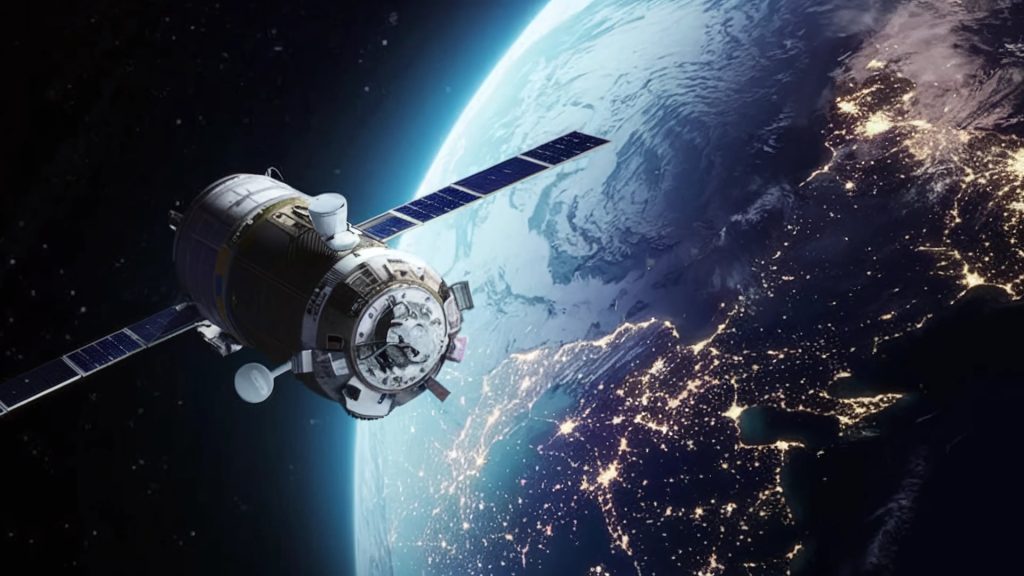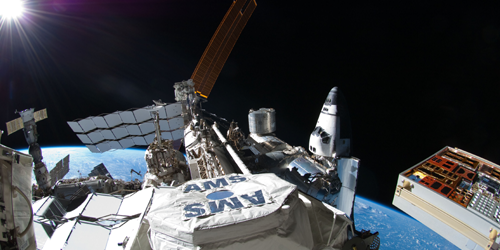Giant Catapult Launches Satellites Into Space Without Rocket Fuel – The Daily Galaxy –Great Discoveries Channel

A groundbreaking new technology is set to change the way we send satellites into space, offering a cleaner, more cost-effective alternative to traditional rocket launches. Developed by California-based company SpinLaunch, this innovative system uses a massive rotating arm to catapult satellites into orbit—without relying on rocket fuel. By harnessing kinetic energy, the method could significantly reduce launch costs, minimize environmental damage, and revolutionize satellite deployment.Traditional rockets burn huge amounts of fuel to propel satellites into orbit, creating high costs and significant environmental damage. This process is not only expensive but also harmful to the environment, producing large amounts of carbon emissions and contributing to ozone depletion.SpinLaunch takes a completely different approach. Instead of burning fuel, it uses a vacuum-sealed centrifuge with a massive rotating arm to spin satellites at incredible speeds before releasing them into space. The entire system is powered by electricity, making it far more sustainable than conventional rocket propulsion.Once released, the projectile moves at supersonic speeds, exiting the launch barrel and heading toward space. The entire process happens so quickly that, as seen in test footage, the satellite is barely visible as it leaves the launcher.SpinLaunch has already conducted multiple successful test launches at its facility in New Mexico. The company has demonstrated that its system can repeatedly function as expected, completing ten launches within just 11 months—an impressive achievement for any space technology.CEO Jonathan Yaney emphasized the reliability of the system, stating that it has consistently delivered successful tests. With this momentum, SpinLaunch aims to deploy satellite constellations into low Earth orbit (LEO), targeting altitudes of less than 600 miles by 2026.The technology has also attracted high-profile partners, including NASA, Airbus, and Cornell University. These organizations have provided funding, expertise, and equipment to test the feasibility of launching different types of payloads.Tests have shown that even after experiencing extreme forces, satellites remain fully functional, proving that this fuel-free launch method is viable for real-world missions. Despite enduring forces 10,000 times the pull of Earth’s gravity, the satellites and electronics remain functional after launch—an essential factor for the technology’s success.One of the most compelling reasons to invest in SpinLaunch’s technology is its potential to reduce the cost and environmental impact of space travel.Currently, a SpaceX Falcon 9 rocket requires over 900,000 pounds of fuel for a single launch. Even with advances in reusable rockets, spaceflight remains an expensive and resource-intensive endeavor. By eliminating the need for massive fuel consumption, SpinLaunch could:Another major advantage is the impact on the ozone layer. Traditional rocket launches contribute to ozone depletion, increasing exposure to harmful solar radiation. SpinLaunch’s fuel-free launch system offers an alternative that avoids this damage while still achieving high-altitude deployment.Despite its many advantages, the SpinLaunch system also faces significant technical and engineering challenges.One of the biggest hurdles is ensuring that satellites can survive the extreme G-forces of launch. Most space-bound objects are not designed to withstand such intense acceleration, meaning engineers must develop specialized payloads that can endure these conditions.The current design of SpinLaunch is optimized for small satellites rather than large payloads. While this aligns with the increasing demand for miniaturized space technology, it limits the system’s ability to support large-scale missions or crewed spaceflights.Since SpinLaunch’s projectiles rely primarily on kinetic energy, they may require additional propulsion to fine-tune their position in orbit. This means that while fuel use is significantly reduced, it is not completely eliminated.Due to the immense G-forces experienced during launch, SpinLaunch is not suitable for human passengers. Any astronaut attempting to ride this system would face forces far beyond the human body’s tolerance levels.SpinLaunch represents a major shift in the way we think about getting payloads into orbit. If successfully scaled up, this technology could revolutionize the space industry by offering a faster, cheaper, and more sustainable alternative to traditional rocket launches.Looking ahead, SpinLaunch is planning to build a coastal orbital launch site, which would allow for full-scale commercial satellite launches. This development is essential for proving the long-term viability of the system.Beyond SpinLaunch, other companies and organizations are also exploring innovative satellite launch technologies, including:As space technology continues to evolve, kinetic launch systems like SpinLaunch could become a dominant force in the industry, making satellite deployment faster, cleaner, and more efficient.Got a reaction? Share your thoughts in the commentsEnjoyed this article? Subscribe to our free newsletter for engaging stories, exclusive content, and the latest news.Comment Save my name, email, and website in this browser for the next time I comment.
© 2024 | Daily Galaxy | All rights reserved
Source: https://dailygalaxy.com/2025/02/giant-catapult-launches-satellites-into-space-without-rocket-fuel/






